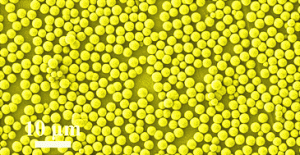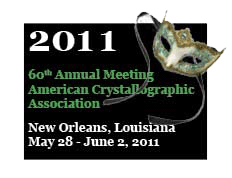 Although pyrite has been made in many morphological forms, such as films, nanocubes and nanowires, microspheres have never been made …until now. Qi-Zhi Yao, Gen-Tao Zhou and their team based in Heifei, China have used a microwave-assisted polyol method to produce uniform and monodisperse pyrite microspherolites.
Although pyrite has been made in many morphological forms, such as films, nanocubes and nanowires, microspheres have never been made …until now. Qi-Zhi Yao, Gen-Tao Zhou and their team based in Heifei, China have used a microwave-assisted polyol method to produce uniform and monodisperse pyrite microspherolites.
Monodisperse nano-/microspheres have attracted increasing attention because of their promising applications in optical and photonic crystals and microlenses and can be used as seed particles for the core-shell and hollow spheres. Read more in this recent CrystEngComm Hot Article.
Microwave-assisted controlled synthesis of monodisperse pyrite microspherolites
Mao-Lin Li, Qi-Zhi Yao, Gen-Tao Zhou, Xiao-Fei Qu, Cheng-Fa Mu and Sheng-Quan Fu
CrystEngComm, 2011, Advance Article DOI: 10.1039/C1CE05478C











 Guoqi Zhang, Guoqiang Yang and coworkers from the Chinese Academy of Sciences, Beijing make a series of bis(pyrrolyl)carbohydrazide derivatives in this CrystEngComm Hot article.
Guoqi Zhang, Guoqiang Yang and coworkers from the Chinese Academy of Sciences, Beijing make a series of bis(pyrrolyl)carbohydrazide derivatives in this CrystEngComm Hot article. José Giner Planas and colleagues from the Institut de Ciència de Materials de Barcelona (ICMAB-CSIC), and Mark E. Light and Michael B. Hursthouse from the University of Southampton look at methyl-o-carboranyl and o-carboranyl alcohols bearing N-aromatic rings in this CrystEngComm Hot article.
José Giner Planas and colleagues from the Institut de Ciència de Materials de Barcelona (ICMAB-CSIC), and Mark E. Light and Michael B. Hursthouse from the University of Southampton look at methyl-o-carboranyl and o-carboranyl alcohols bearing N-aromatic rings in this CrystEngComm Hot article. In this CrystEngComm Hot article, Roberto Otero and colleagues from Spain self assemble zinc meso-tetramesitylporphyrin on copper and gold into one-dimensional nanorods.
In this CrystEngComm Hot article, Roberto Otero and colleagues from Spain self assemble zinc meso-tetramesitylporphyrin on copper and gold into one-dimensional nanorods. Read this CrystEngComm Hot article to discover how the Kirkendall effect can be used to make BiOI nests.
Read this CrystEngComm Hot article to discover how the Kirkendall effect can be used to make BiOI nests.
 In this HOT article, Babashkina and co-workers have synthesized the first examples of NiII complexes containing the same asymmetric NTT [(N-(thio)phosphorylated thioamides and thioureas RC(S)NHP(X)(OR0)2 (X ¼ O, S)] ligand featuring an aryl-NH substituent at the thiocarbonyl group and coordinating to the metal both in the 1,3-N,S- and 1,5-S,S’-fashion in the solid state depending on the crystallization conditions.
In this HOT article, Babashkina and co-workers have synthesized the first examples of NiII complexes containing the same asymmetric NTT [(N-(thio)phosphorylated thioamides and thioureas RC(S)NHP(X)(OR0)2 (X ¼ O, S)] ligand featuring an aryl-NH substituent at the thiocarbonyl group and coordinating to the metal both in the 1,3-N,S- and 1,5-S,S’-fashion in the solid state depending on the crystallization conditions. Song Gao and colleagues from Peking University investigate a way of improving the chances of obtaining chiral crystalline solids, in this CrystEngComm Hot article.
Song Gao and colleagues from Peking University investigate a way of improving the chances of obtaining chiral crystalline solids, in this CrystEngComm Hot article.
